Abstract
Mated cultures of Blakeslea trispora, grown in a potato extract-glucose-thiamine medium, produced 10 to 15 times more β-carotene than either unmated culture. Mated, but not unmated, cultures produced a family of compounds (β factor) which stimulated carotenogenesis in unmated cultures. In fact, carotenogenesis was stimulated sixfold more in minus cultures than in plus cultures. By altering the relative amounts of plus and minus inocula used in fermentations of mated cultures, it was possible to separate the synthesis of β factor from the synthesis of extra β-carotene. The plus strain appeared to produce the β factor; the minus strain appeared to produce most of the extra β-carotene. Kinetic studies of β-factor formation suggested that physical contact between the two strains may be required to initiate β-factor synthesis.
Full text
PDF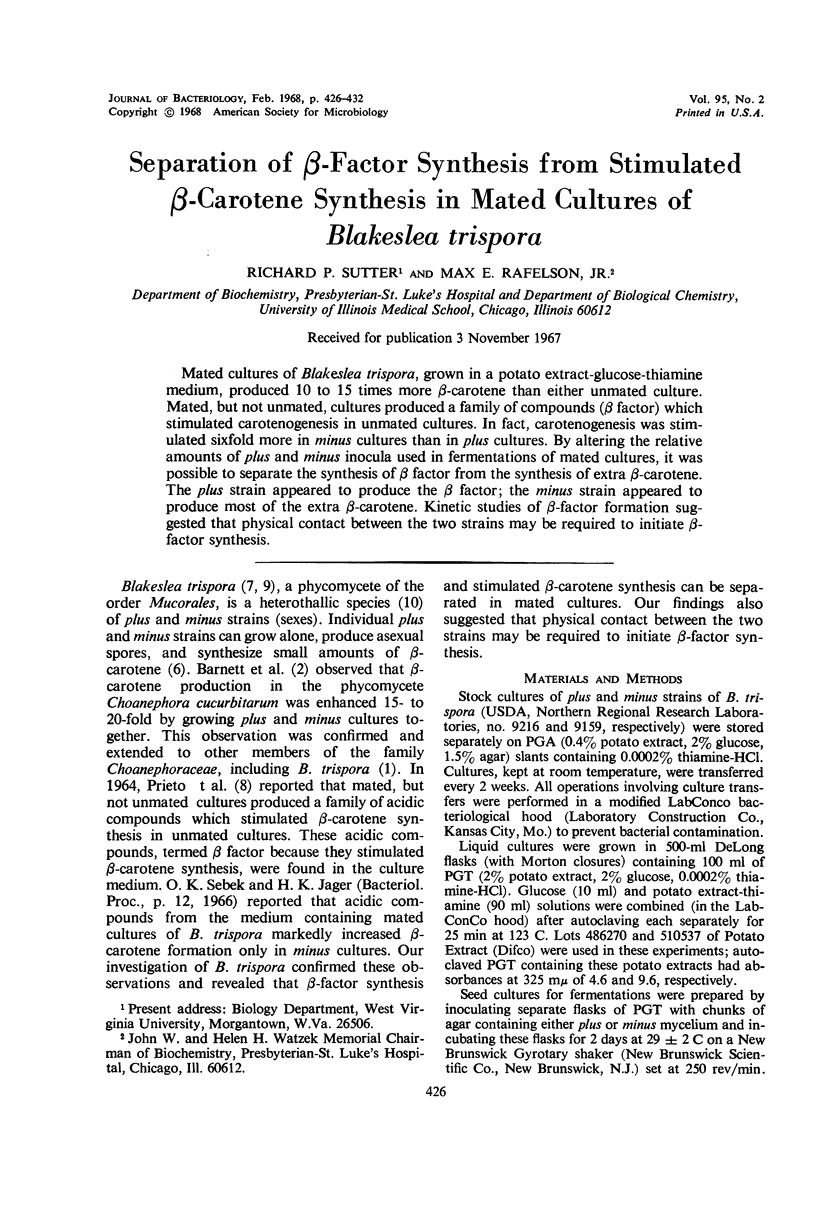
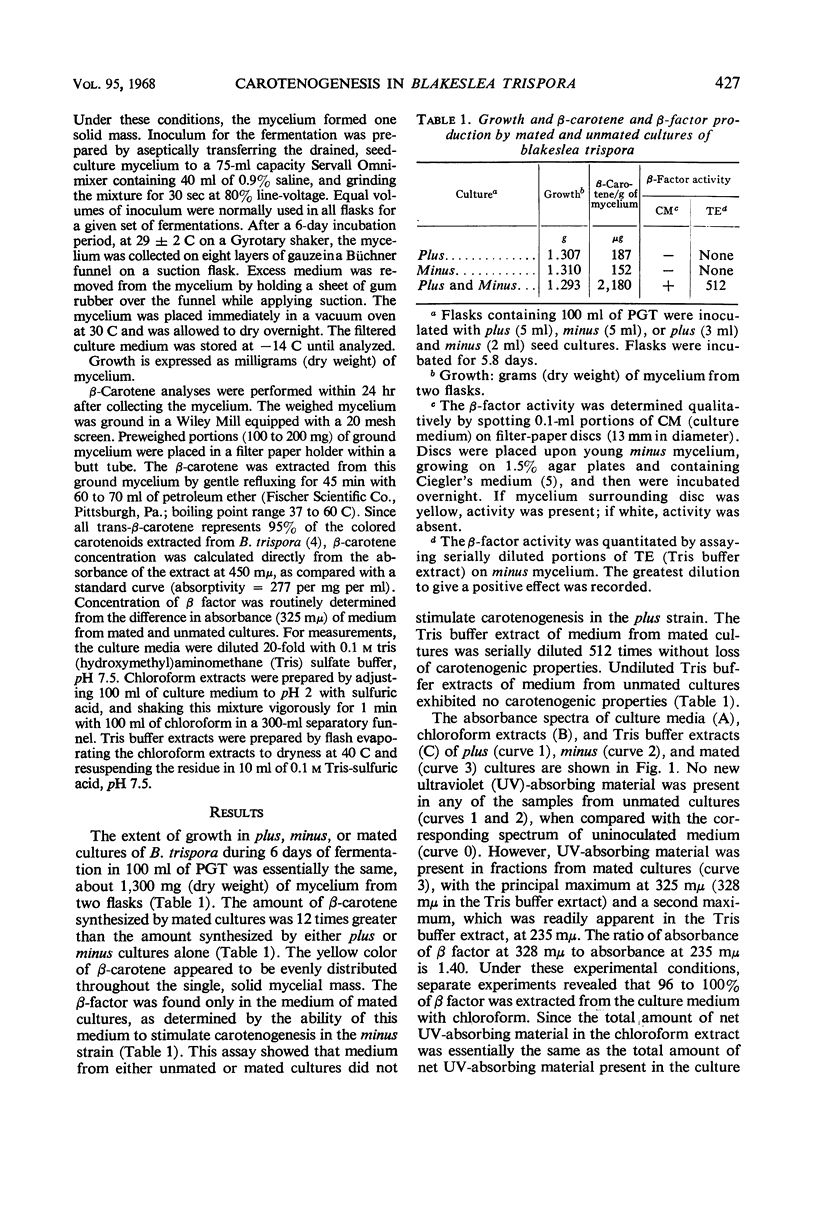
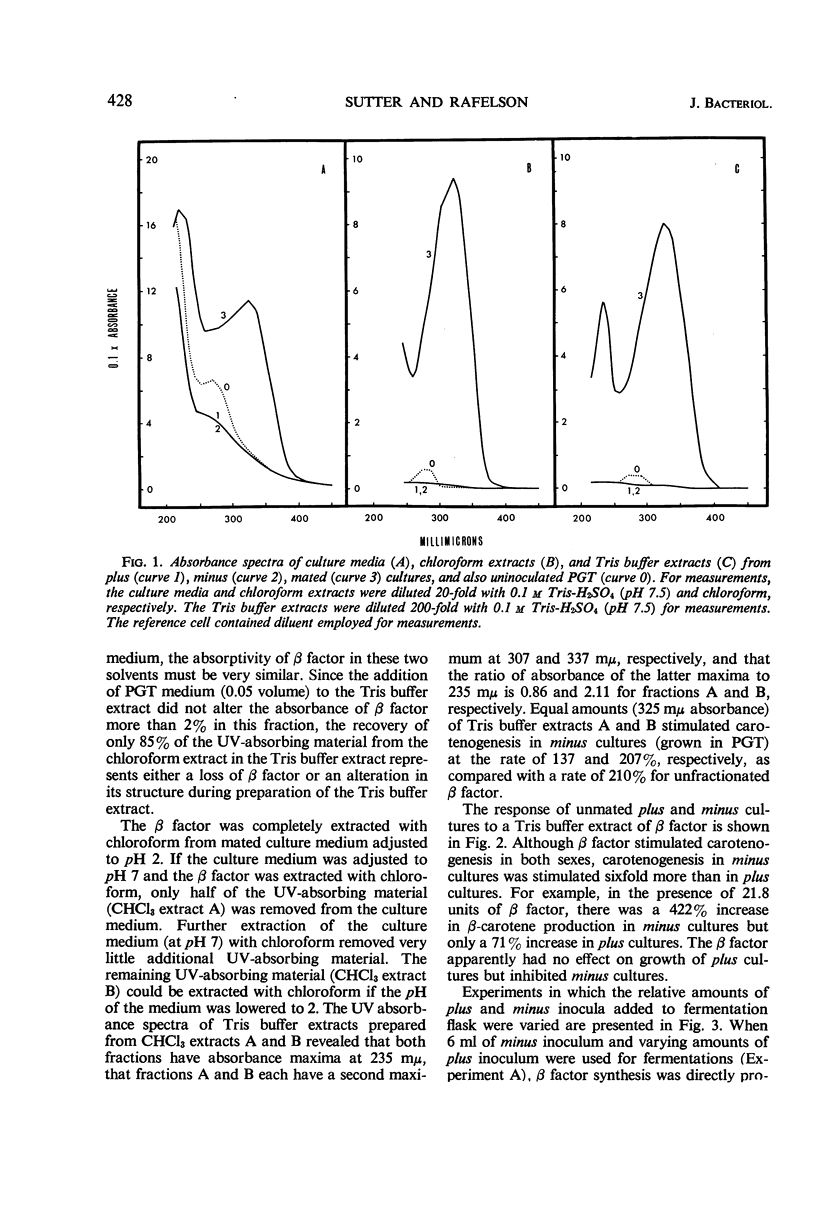
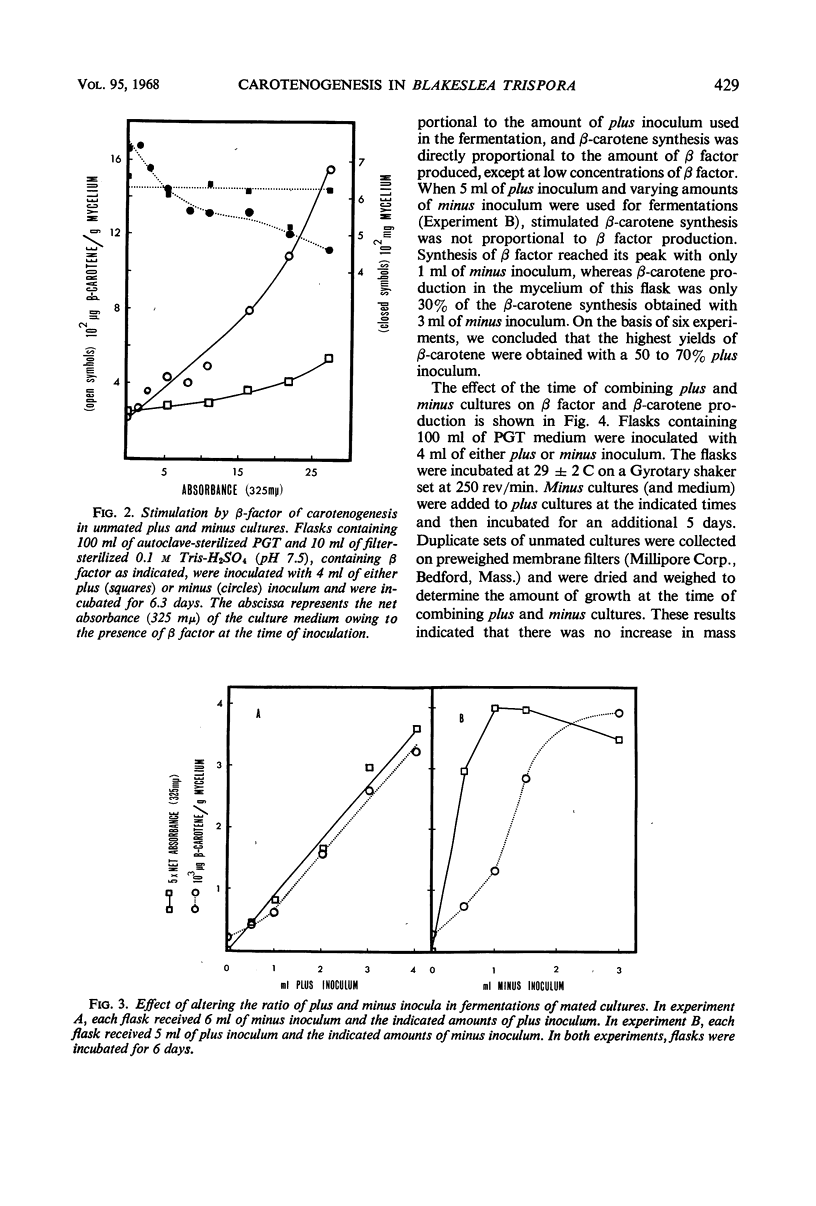
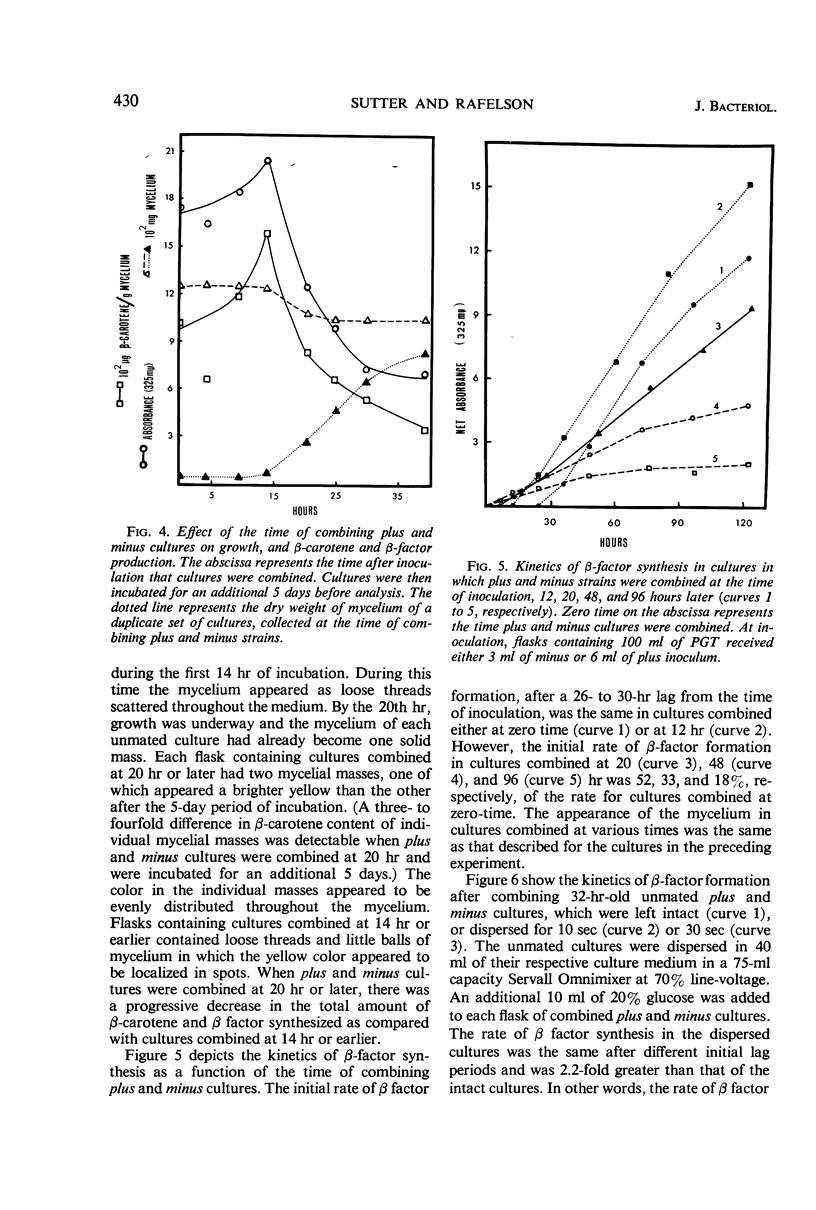
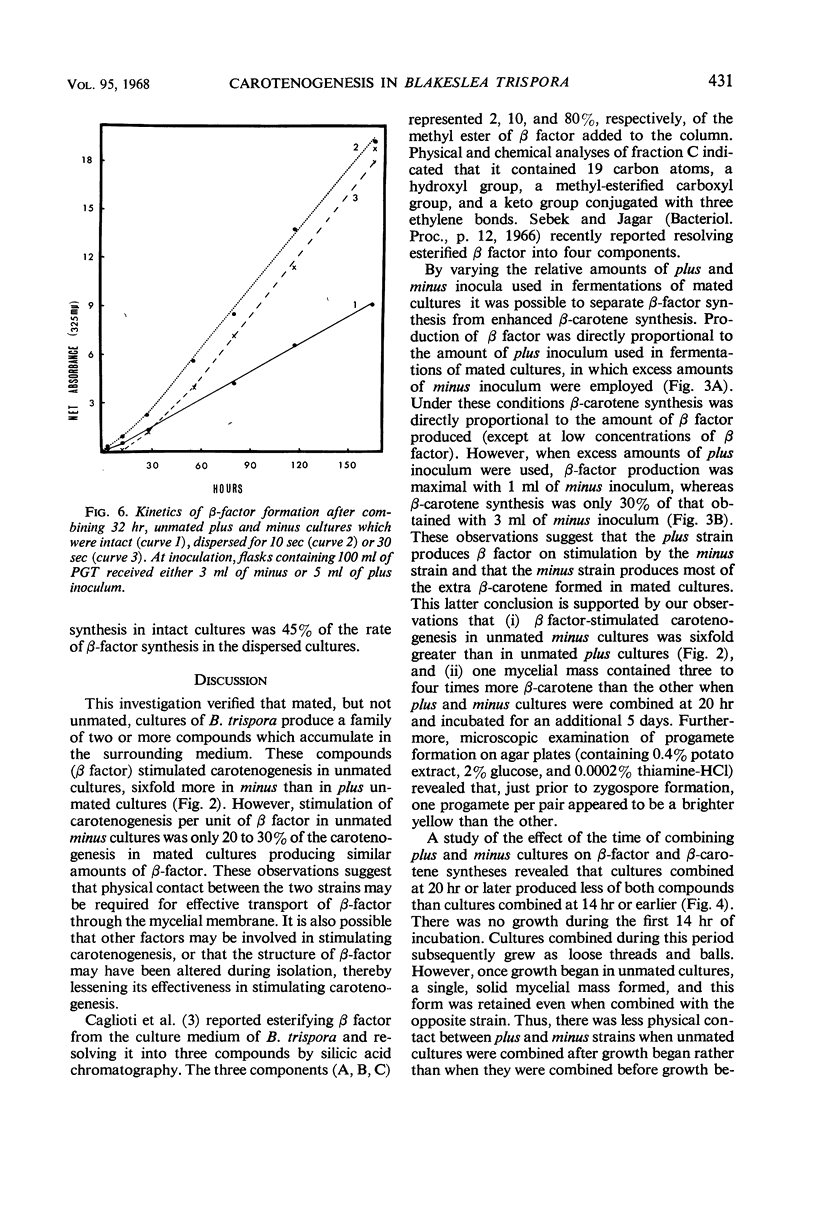
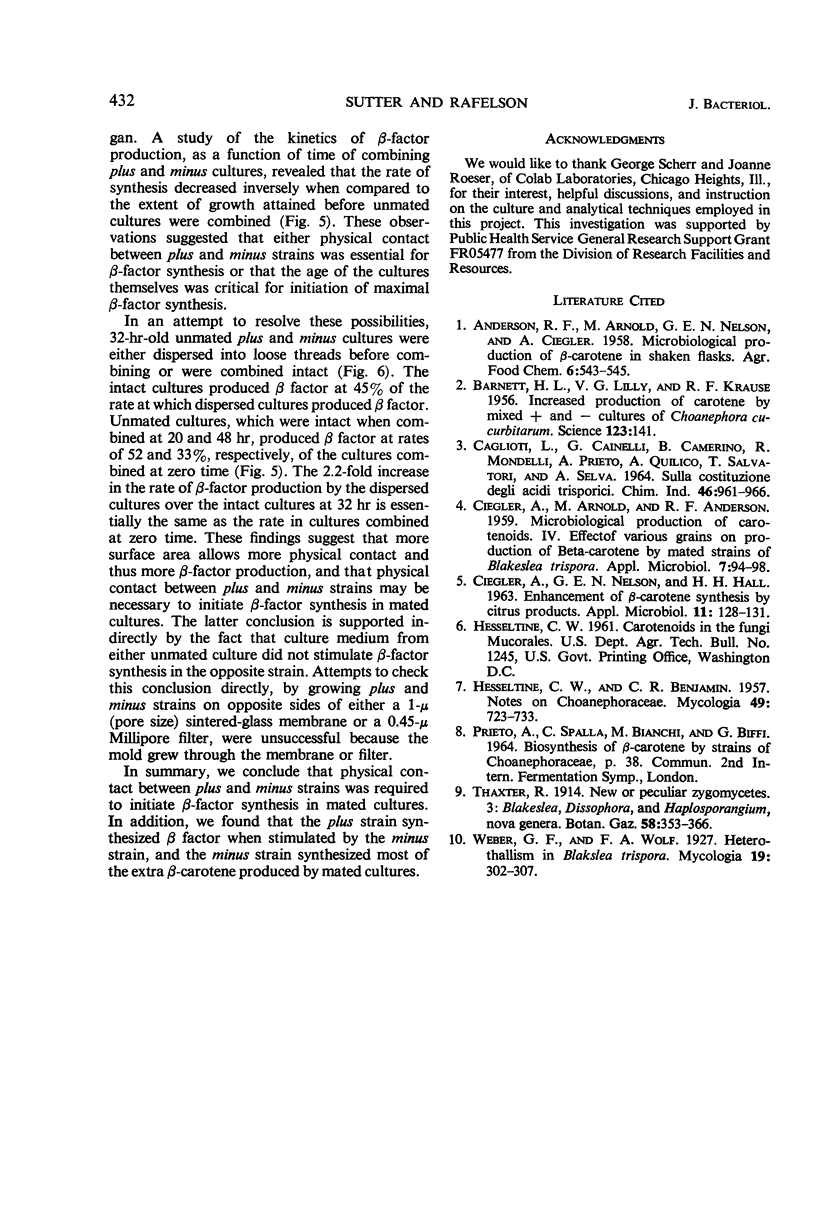
Selected References
These references are in PubMed. This may not be the complete list of references from this article.
- BARNETT H. L., LILLY V. G., KRAUSE R. F. Increased production of carotene by mixed + and - cultures of Choanephora cucurbitarum. Science. 1956 Jan 27;123(3187):141–142. doi: 10.1126/science.123.3187.141. [DOI] [PubMed] [Google Scholar]
- CIEGLER A., ARNOLD M., ANDERSON R. F. Microbiological production of carotenoids. IV. Effect of various grains on production of beta-carotene by mated strains of Blakeslea trispora. Appl Microbiol. 1959 Mar;7(2):94–98. doi: 10.1128/am.7.2.94-98.1959. [DOI] [PMC free article] [PubMed] [Google Scholar]
- CIEGLER A., NELSON G. E., HALL H. H. Enhancement of beta-carotene synthesis by citrus products. Appl Microbiol. 1963 Mar;11:128–131. doi: 10.1128/am.11.2.128-131.1963. [DOI] [PMC free article] [PubMed] [Google Scholar]


